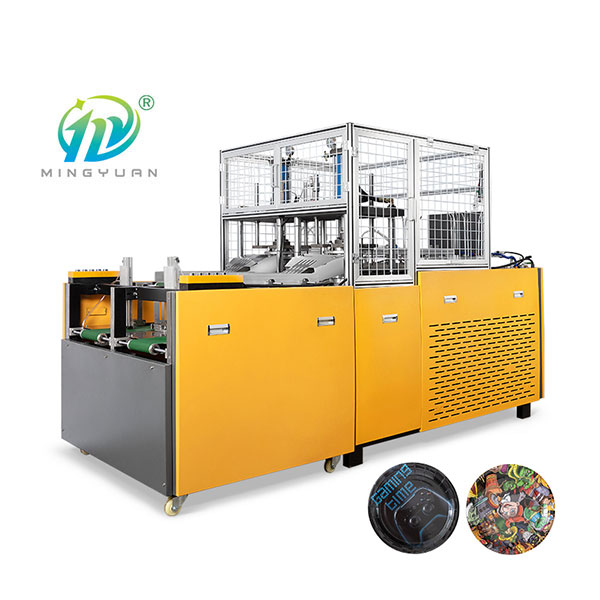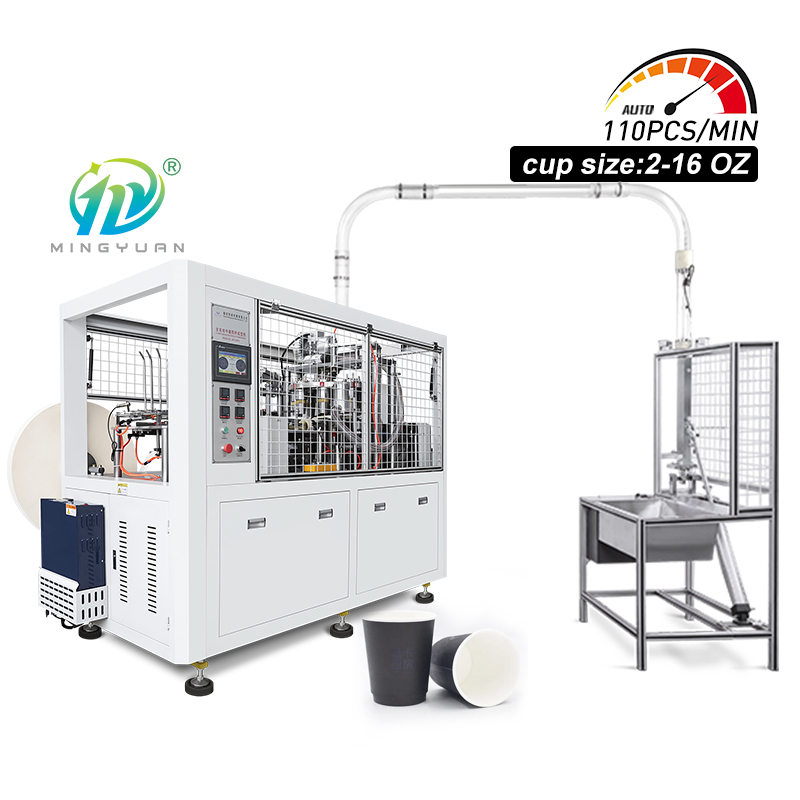Paper bowls often seem pricey due to a mix of raw material costs, production complexity, and regulatory compliance. Food-grade paperboard, treated with waterproof barriers like PE film or plant-based coatings, costs 30-40% more than ordinary paper. High-speed production machines require expensive precision dies, while safety certifications add thousands in testing fees.
What Does a Paper Bowl Machine Do
A paper bowl machine serves as the technological backbone of modern disposable tableware production, integrating mechanical engineering with material science. These automated systems—ranging from compact semi-automatic models to fully robotic production lines—execute a sequence of functions: pulp molding (for molded fiber bowls), die-cutting of pre-printed paperboard, thermal lamination of barrier layers, and precision forming via male-female mold assemblies. Advanced machines may incorporate inline quality sensors that detect micro-tears or coating inconsistencies, while modular designs allow quick changeovers between bowl diameters (from 4" salad bowls to 12" soup containers). The latest Industry 4.0-compliant machines feature IoT connectivity, enabling real-time monitoring of production metrics like energy consumption (typically 0.3-0.5 kWh per 100 bowls) and OEE (Overall Equipment Effectiveness) tracking.
How Does a Paper Bowl Machine Work
The operational workflow of a paper bowl machine unfolds in four distinct phases, each leveraging specialized sub-systems:
1. Material Handling & Preprocessing
A unwind station feeds jumbo rolls of paperboard (up to 1.5m wide) into the machine, where an edge guiding system maintains alignment. Pre-treatment modules may apply corona discharge to enhance PE film adhesion or emboss texture patterns for non-slip surfaces. In pulp molding machines, recycled paper pulp is mixed with water to form a slurry, which is vacuum-deposited onto screen molds.
2. Forming & Shaping
Rotary die-cutting stations use tungsten carbide blades to punch circular blanks, with scrap material recycled via an integrated conveyor. The blanks are transferred to a forming drum, where they are pressed against a heated mold (typically 180-220°C) to set the bowl shape. For double-wall bowls, a second layer is simultaneously laminated using hot-melt adhesives, with registered alignment accuracy within 0.1mm.
3. Coating & Finishing
In-line coating heads apply food-safe barriers: polyethylene extrusion coating (0.02-0.05mm thickness) for high-temperature resistance, or aqueous-based acrylic coatings for eco-friendly variants. UV curing systems instantly dry water-based coatings, while infrared heaters cure wax layers. Some machines include embossing rollers to imprint logos or ribbed patterns for improved grip.
4. Quality Control & Ejection
Vision systems equipped with CCD cameras inspect each bowl for defects like incomplete coating or misshapen rims, rejecting non-conformities via pneumatic ejectors. Finished bowls are stacked by a robotic arm into magazine racks, with optional automatic bagging or shrink-wrapping modules. Advanced machines achieve a production yield of over 98%, with changeover times between product runs reduced to 15 minutes through quick-release mold systems.
Related Paper Bowl Machine Terminology
- Pulp Molding Machine: Specialized equipment using wet forming processes for molded fiber bowls, often incorporating post-consumer recycled content.
- Servo-Driven System: High-precision motion control technology that reduces energy consumption by 20-30% compared to traditional mechanical drives.
- Barrier Coating Applicator: Equipment for applying nano-composite coatings, which are replacing traditional PE layers in biodegradable bowl production.
- Multi-Cavity Mold: Tooling that allows simultaneous production of 8-16 bowls per cycle, critical for high-volume manufacturing.
- PLC (Programmable Logic Controller): The central control unit that coordinates all machine functions, often programmable via HMI (Human-Machine Interface) panels.
Conclusion
In essence, the cost of paper bowls mirrors the intricate balance of technological innovation, regulatory standards, and sustainable practices in modern manufacturing. From the precision engineering of paper bowl forming machines to the development of eco-friendly barrier materials, each expense contributes to a product that meets both functional needs and evolving environmental expectations—proving that behind every seemingly expensive paper bowl lies a complex ecosystem of science, technology, and responsibility.








